From Manual to Smart: Pallet Inverters Transforming Argentina's Material Handling
Your team is on the warehouse floor, manually transferring heavy loads from one pallet to another. It is slow work. A worker's back strains. A forklift operator waits, the engine idling. This entire process is a bottleneck. It costs you time and exposes your business to the risk of injury and product damage. Every minute wasted is a hit to your productivity. Every damaged product is a direct loss. And a single workplace injury can lead to significant costs and operational disruptions. In competitive markets like Argentina's manufacturing sector, these small inefficiencies add up. They erode your profit margins and hold your business back. But what if you could flip an entire pallet load in under a minute, with a single operator and zero manual lifting? This is not a future concept. It is the reality that smart pallet inverters are bringing to warehouses and factories today, transforming material handling from a liability into a strategic advantage.
Pallet inverters are revolutionizing material handling in Argentina by automating the transfer of goods between pallets. This technology provides a fast, safe, and efficient alternative to manual restacking. As a result, companies are drastically reducing labor costs, minimizing product damage, and improving overall supply chain speed and safety.
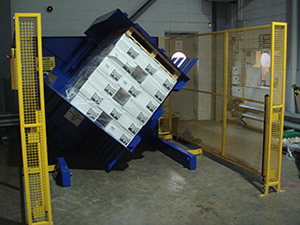
You see how this change can be powerful. But adopting new technology is a big decision. You need to understand how it works and what real benefits it can bring to your specific operations. Let's look closer at the key questions managers and owners in Argentina are asking. We will explore how this technology addresses costs, safety, and even your long-term strategic goals.
How Do Pallet Inverters Directly Address Rising Operational Costs?
You look at your operational budget, and the numbers are climbing. Labor costs are up. You are losing money from products damaged during manual handling. Your wooden pallets get worn out and need constant replacement. Or you are paying extra to ship on expensive plastic or in-house pallets. These costs feel uncontrollable. They chip away at your bottom line. You might feel stuck between accepting these losses or making a huge investment you're not sure will pay off. This financial pressure makes it hard to plan for growth. A pallet inverter offers a direct, measurable solution. By automating load transfers, it immediately cuts down on the manual labor needed for the task. It protects your products from damage. And it allows you to switch from expensive shipping pallets to cheaper alternatives, creating multiple streams of cost savings from one machine.
Pallet inverters directly address rising operational costs by reducing the need for manual labor, preventing costly product damage during handling, and enabling the use of less expensive shipping pallets. This leads to significant savings in labor, materials, and damage claims, providing a clear and rapid return on investment.
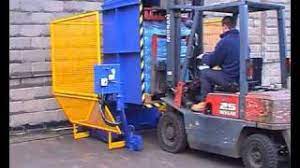
Let's break down the return on investment (ROI) in more detail. In my years of working with factories, I have seen the financial impact firsthand. The justification for a pallet inverter is not based on one single benefit, but on a collection of savings that add up quickly. For a business owner like Javier, who conducts strict feasibility analyses, understanding these streams is crucial.
Analyzing the Cost Breakdown
The most obvious saving is labor. A manual transfer might require two or three workers for 15-20 minutes. A pallet inverter does the same job with one operator in about 60 seconds. This is not just a reduction in man-hours; it frees up your skilled workers to perform value-added tasks instead of manual labor. But the savings go deeper. Product damage is a significant hidden cost. When dealing with heavy or fragile goods, like steel coils or bagged cement, manual handling is risky. A single slip can damage thousands of dollars worth of product. A pallet inverter secures the load with controlled hydraulic pressure before rotating it, making the process incredibly safe for the product. This can reduce damage-related losses by over 90% in many cases.
| Cost Factor | Manual Pallet Transfer | With Pallet Inverter | Annual Savings Example (50 transfers/day) |
|---|---|---|---|
| Labor | 2 workers, 15 minutes/pallet | 1 worker, 1 minute/pallet | > $30,000 |
| Product Damage | 1-2% of handled goods value | < 0.1% of handled goods value | > $20,000 |
| Pallet Costs | High cost of durable shipping pallets | Use cheap one-way pallets for shipping | > $15,000 |
| Throughput | Bottleneck, limits shipping | Smooth flow, increases capacity | Unlocks revenue potential |
The Pallet Strategy Advantage
Another major cost center is the pallets themselves. Many companies in Argentina, like in Mexico, must ship products internationally. This often requires using expensive, heat-treated wooden pallets to comply with ISPM 15 standards. Or, you might use high-quality plastic or metal pallets for their durability within your own facility. A pallet inverter gives you strategic flexibility. You can keep your expensive, durable pallets in a closed loop inside your factory. When it's time to ship, you use the inverter to quickly transfer the load onto a cheap, compliant, one-way shipping pallet. You no longer lose your expensive assets. This strategy alone can pay for the machine in less than two years. For a high-volume operation like a steel mill, the savings are multiplied.
What Are the Key Safety and Efficiency Gains from Implementing Pallet Changers?
A key member of your warehouse team is out on sick leave with a back injury from lifting heavy boxes. At the same time, a shipment is delayed because restacking pallets manually is creating a bottleneck in your loading bay. These situations are more than just inconvenient. They represent a serious risk to your employees' well-being and a major drag on your plant's productivity. The constant threat of accidents and the slow pace of manual work can create a stressful and inefficient environment. Pallet changers, or pallet inverters, are designed to solve these exact problems. They completely remove the need for manual lifting and restacking. This single change dramatically improves workplace safety. It also turns a slow, laborious task into a fast, automated process that keeps your production line moving smoothly.
The key safety gain from implementing pallet changers is the near-elimination of musculoskeletal injuries associated with manual lifting. The primary efficiency gain comes from transforming a multi-person, time-consuming task into a one-person, sub-one-minute automated process, which significantly increases throughput and reduces bottlenecks.
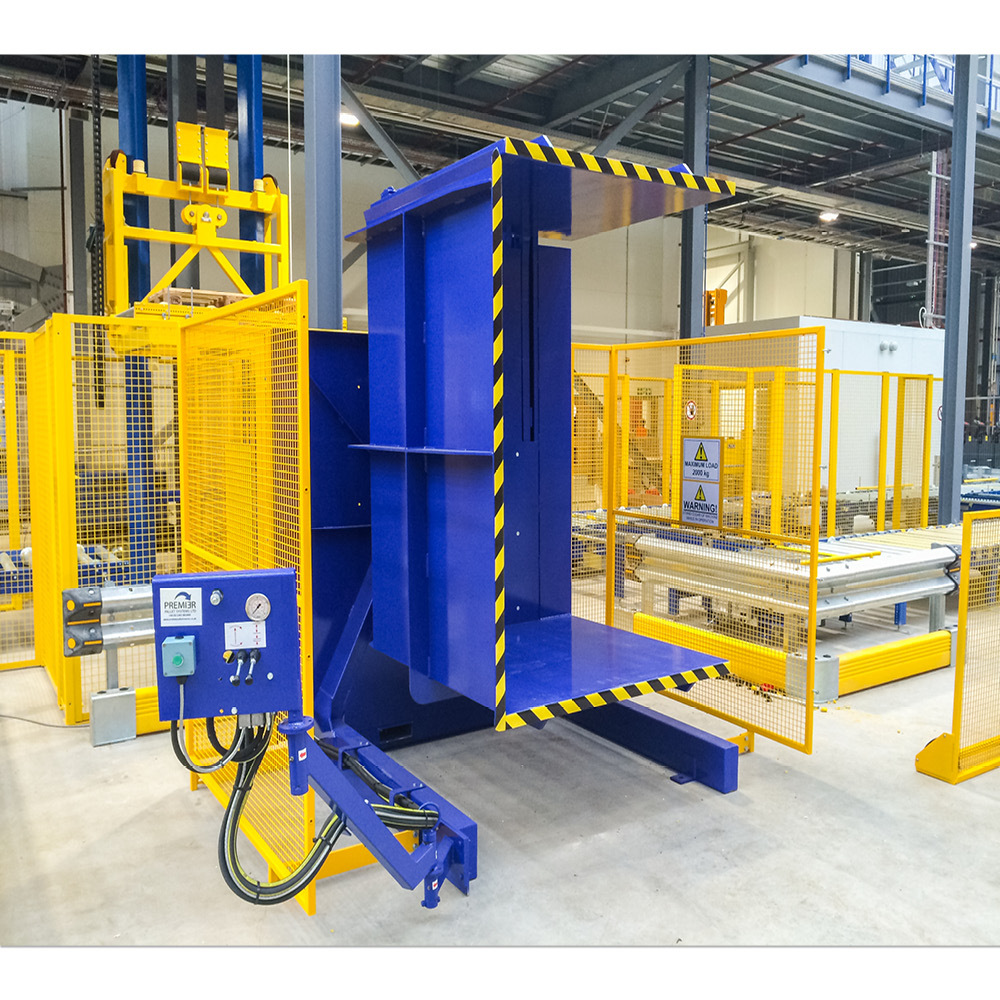
From my perspective as an engineer, efficiency and safety are two sides of the same coin. A safe process is almost always an efficient one because it is controlled, predictable, and repeatable. Manual processes are none of those things. Let's look at the practical, day-to-day impact.
A Safer Floor is a More Productive Floor
The leading cause of non-fatal workplace injuries is overexertion, often involving lifting. These are called musculoskeletal disorders (MSDs), and they include back sprains, shoulder injuries, and hernias. For a steel mill owner like Javier, where loads are heavy and repetitive, this risk is amplified. The costs are not just medical bills and insurance premiums. They include lost workdays, the cost of hiring and training temporary replacements, and lower morale among the team. A pallet inverter physically removes the hazard. The machine does all the lifting, holding, and turning. The operator is simply pushing buttons from a safe distance. I have visited factories before and after they installed our machines. The change in the atmosphere is noticeable. The stress is gone. The workflow is calm and controlled. This directly contributes to a more stable and reliable workforce.
Unlocking Hidden Efficiencies
The most obvious efficiency gain is speed. But the true impact on productivity comes from eliminating bottlenecks. Imagine your production line can produce 100 pallets a day, but your manual packing station can only handle 80. Your entire operation is limited by its slowest point.
| Workflow Step | Manual Pallet Transfer | With Pallet Changer | Impact |
|---|---|---|---|
| 1. Preparation | Find 2-3 available workers | Forklift driver approaches machine | Reduced labor coordination time |
| 2. Load Handling | Manually unstack and restack load | Machine clamps and rotates load | From 15-20 minutes to < 60 seconds |
| 3. Risk Factor | High risk of injury and product drop | Contained process, minimal risk | Drastically improved safety |
| 4. Final Step | Remove old pallet, clean up | New pallet is ready, load is removed | Less downtime, cleaner workspace |
| Total Outcome | 4-5 pallets/hour (max) | 30-40 pallets/hour | 8x increase in throughput potential |
By turning a 15-minute task into a 1-minute task, you remove that bottleneck completely. This allows you to realize the full potential of your production equipment. For a CEO with a goal to increase equipment effective run time to 95%, eliminating these downstream chokepoints is not just helpful; it is absolutely necessary. It means forklifts are not waiting, trucks are loaded faster, and your production schedule stays on track.
Can Pallet Inverters Integrate with Existing Digital Transformation Strategies?
You are investing heavily in digital systems like MES and IoT sensors to make your factory smarter. But you still have "islands" of old, manual processes, like pallet handling. These processes are not connected to your new digital ecosystem. This disconnect creates blind spots in your data. You cannot fully track product flow or identify inefficiencies if key steps are happening "offline." It undermines your entire digital transformation effort. It also prevents you from achieving true, end-to-end production visibility. Modern pallet inverters are built for the smart factory. They are more than just mechanical machines. They can be equipped with sensors and connectivity options. This allows them to integrate directly into your MES or WMS. This turns them into another data point in your digital network. They provide real-time information on cycle times, throughput, and operational status.
Yes, modern pallet inverters can integrate seamlessly with existing digital transformation strategies. Through PLCs and communication protocols, they can connect to Manufacturing Execution Systems (MES) and Warehouse Management Systems (WMS), feeding valuable data on cycle counts, operational status, and throughput directly into the central control platform.
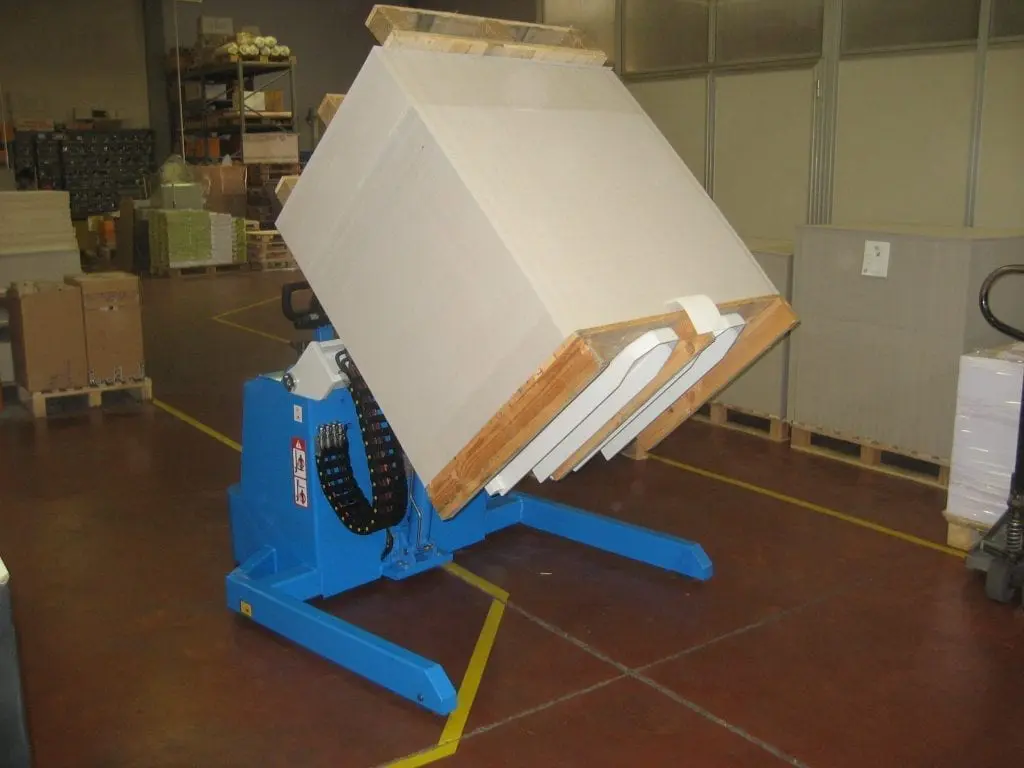
As someone who has helped factories evolve, I know that true digitalization is about connecting every piece of the puzzle. An unconnected machine is a black box. For a leader like Javier, whose goal is to deploy MES, IoT, and big data platforms, ensuring every new piece of equipment can "talk" to the central system is a non-negotiable requirement.
From Mechanical Mover to Data Node
A basic pallet inverter functions mechanically. But a smart pallet inverter is built with a Programmable Logic Controller (PLC) at its core. This is the machine's brain. This PLC can be programmed to communicate with higher-level factory management systems using standard industrial protocols like OPC UA or MQTT. What does this mean in practice? It means your central dashboard can now "see" the pallet inverter. You can track critical data points in real time.
| Data Point from Pallet Inverter | Business Value for Management |
|---|---|
| Cycle Count | Tracks exactly how many pallets are processed per shift, day, or week. Measures real productivity. |
| Cycle Time | Measures the average time per operation. Helps identify delays or operator training needs. |
| Operational Status | Real-time status (running, idle, fault). Allows for immediate response to problems. |
| Fault Codes | Specific error codes sent to the MES. Maintenance can diagnose problems remotely before arriving. |
| Load Weight (with optional scales) | Captures weight data for every pallet, ensuring accurate shipping manifests and quality control. |
The Role of Pallet Inverters in Predictive Maintenance
This data integration is a cornerstone of advanced strategies like predictive maintenance. Javier's goal of 95% equipment uptime requires moving from a "fix it when it breaks" model to a "fix it before it breaks" model. When your pallet inverter is connected, you can analyze its operational data over time. Your system might learn that a slight increase in hydraulic cycle time often precedes a filter clog. The MES can then automatically generate a maintenance work order before the clog becomes severe enough to cause a failure. This proactive approach is fundamental to achieving high utilization rates in a modern, demanding production environment like a steel mill. The pallet inverter is no longer just a tool for moving goods; it becomes an intelligent asset in your smart factory ecosystem.
Why is Pallet Swapping a Crucial Step for Environmental Sustainability and Compliance?
Your company is facing increasing pressure to be more sustainable. You need to reduce waste. And government regulations on things like pallet treatment (ISPM 15) are getting stricter and more complex to manage. Ignoring these pressures can lead to fines, shipment rejections at international borders, and a negative brand image. The logistics of managing pallet pools, ensuring compliance, and minimizing waste can become a significant operational headache and a hidden cost center. Pallet swapping with an inverter is a simple yet powerful sustainability tool. It allows you to keep high-quality, reusable pallets in-house. At the same time, you can send products out on cheaper, one-way, or recycled pallets. This reduces the consumption of wood, eliminates the need for chemical treatments on your internal pallet fleet, and simplifies your entire compliance process.
Pallet swapping is crucial for sustainability because it enables a closed-loop pallet system. Companies can retain their durable, high-quality plastic or metal pallets internally while shipping products on single-use or compliant wood pallets. This reduces deforestation, minimizes waste, and ensures effortless compliance with international shipping standards like ISPM 15.
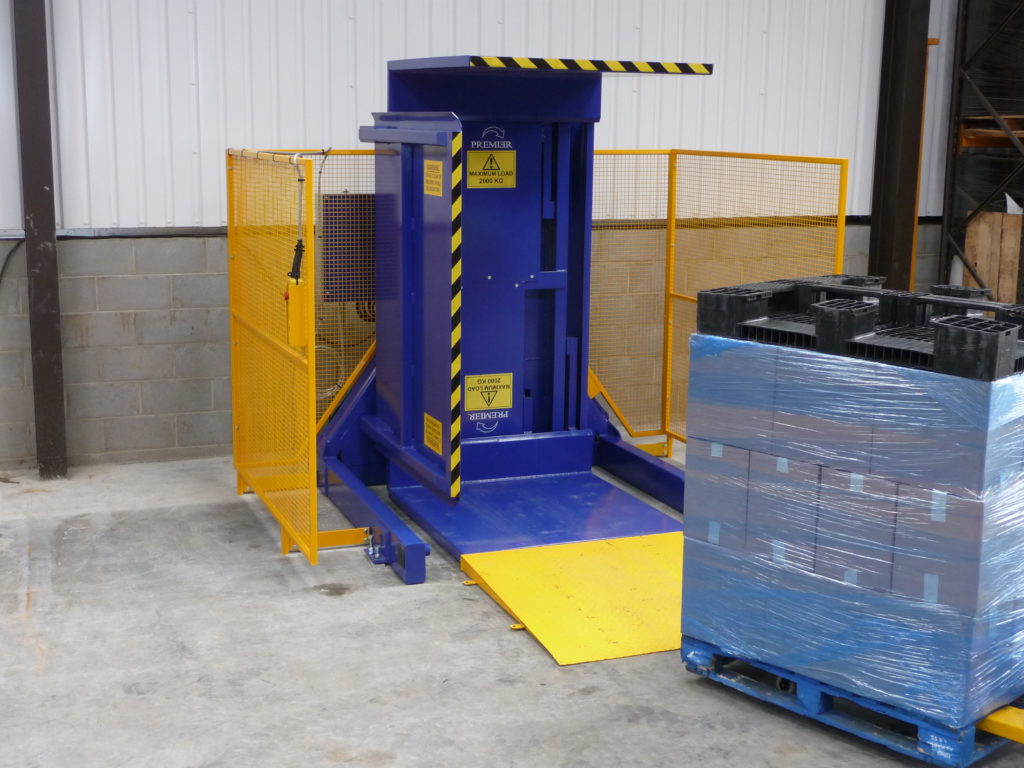
Sustainability is no longer just about public relations. For forward-thinking business owners, it is a core part of operational excellence. It aligns with cost reduction goals and mitigates regulatory risk, a key challenge for any major industrial operation.
Navigating ISPM 15 with Ease
ISPM 15 is an international standard that requires wood packaging material to be heat-treated or fumigated to prevent the spread of pests. This is a major concern for any company in Argentina or Mexico that exports goods. Managing a fleet of compliant pallets is expensive and logistically complex. You need to track them, ensure their certification is current, and worry about them being lost or damaged after shipment. A pallet inverter elegantly solves this. You can standardize your internal operations on durable, non-wood pallets (like plastic or metal) that are exempt from ISPM 15. When a load is ready for export, you use the inverter to swap it onto a cheap, pre-certified, disposable wooden pallet. This completely separates your internal and external pallet logistics. Compliance becomes a simple, low-cost step at the end of the line, not a factory-wide concern.
The Business Case for a Closed-Loop Pallet System
A closed-loop system is not only good for compliance; it is good for your budget and the environment. High-quality plastic or steel pallets can last for years, while a wooden pallet might only survive a few trips. By keeping your valuable pallets in-house, you drastically reduce your pallet purchasing budget over the long term.
| Pallet Strategy | Financial Impact | Environmental Impact | Operational Complexity |
|---|---|---|---|
| All Wood Pallets | High ongoing cost for ISPM 15 treatment and replacement. | High consumption of timber. Constant waste generation. | Complex tracking of certified pallets. High risk of shipping delays. |
| Mixed Fleet w/ Inverter | One-time investment in inverter and durable pallets. Low cost for disposable shippers. | Reduced timber use. Less waste. Durable pallets are reused for years. | Simple. Internal pallets stay in-house. No compliance worries for internal fleet. |
This strategy directly reduces your company's carbon footprint by lowering timber consumption and minimizing waste sent to landfills. For a company facing environmental pressure, this is a clear, demonstrable improvement that can be reported to stakeholders and regulators. It transforms a compliance burden into an opportunity to build a more efficient and responsible operation.
My Take as an Engineer: What Really Matters When Choosing a Pallet Inverter?
You have decided a pallet inverter is right for you. But now you face a market full of different models, features, and suppliers. The technical specifications can be confusing. It is hard to know which machine is truly the best fit for your factory. Choosing the wrong machine can be a costly mistake. It might not handle your specific products well. It could be unreliable and require frequent maintenance. Or it might lack the safety features your team needs. This uncertainty can lead to analysis paralysis, delaying a much-needed improvement. As an engineer who has designed and built these machines for years, I can help you cut through the noise. I have seen what works and what does not in real-world factory settings. There are a few core principles and features that separate a good pallet inverter from a great one.
From an engineer's perspective, what truly matters when choosing a pallet inverter is not just the speed, but the build quality, the reliability of the hydraulic and electrical systems, and the flexibility to handle your specific load types. Prioritize robust construction, proven components, and intuitive, safe controls over secondary features.

I built my own company, SHJLPACK, from the ground up, starting as an engineer on the factory floor. This experience taught me to look past the sales brochure and focus on what ensures long-term performance and reliability. For a leader with an engineering background like Javier, these are the details that guarantee a solid return on investment.
Look Beyond the Spec Sheet: Build Quality and Reliability
The first thing I look at is the steel. How thick is the frame? How clean are the welds? A pallet inverter in a steel mill or a busy distribution center will operate for thousands of cycles a year under heavy loads. A flimsy frame will fatigue and fail. Look for heavy-gauge steel construction. Next, inspect the components. The heart of the machine is its hydraulic power pack and its electrical controls. Are they using components from reputable, internationally recognized brands (like Siemens, Schneider, Parker)? Using high-quality components costs more upfront, but it pays for itself tenfold in reduced downtime and maintenance headaches. A machine is only as strong as its weakest link, and a cheap, no-name hydraulic valve will bring your entire operation to a halt.
Matching the Machine to Your Load
Not all pallet inverters are the same. You must choose a model that fits your specific application.
- Loading Style: Do you want a ground-level loading machine that a pallet jack can access, or a raised model for forklifts only? Ground-loading offers more flexibility.
- Clamping Pressure: This is critical. If you are handling bags of cement, you need high, even clamping pressure. If you are handling fragile boxes, you need adjustable, gentle pressure to avoid crushing the product. A good machine will have easily adjustable pressure settings.
- Automation Level: Do you need a simple, push-button machine, or a fully automated model with conveyor infeeds and outfeeds that integrates into a larger automated line? Be realistic about your current and future needs.
- Safety Features: This is non-negotiable. Modern machines should come standard with safety light curtains that immediately stop the machine if a person enters the operational area. They should also have pressure-sensing safety circuits and clearly marked emergency stops.
Here is a quick checklist I use when evaluating a machine:
| Evaluation Criteria | What to Look For | Why It Matters |
|---|---|---|
| Structural Frame | Thick steel plates, clean and full welds. | Durability and long service life under heavy use. |
| Hydraulic System | Reputable brand components, good hose routing. | Reliability, leak prevention, and ease of maintenance. |
| Control Panel | Intuitive layout, durable buttons, clear labels. | Ease of use for operators, reduces errors. |
| Safety System | Light curtains, safety interlocks, E-stops. | Protects your people, which is the highest priority. |
| Adjustability | Variable clamping pressure and opening range. | Flexibility to handle different types of products safely. |
Choosing the right supplier is as important as choosing the right machine. You are not just buying a piece of equipment; you are entering a long-term partnership. Look for a supplier who understands your industry, provides excellent technical support, and can be a strategic partner in your growth.
Conclusion
Embracing pallet inverters is not just an equipment upgrade. It is a strategic move towards a safer, more efficient, and profitable material handling operation.




